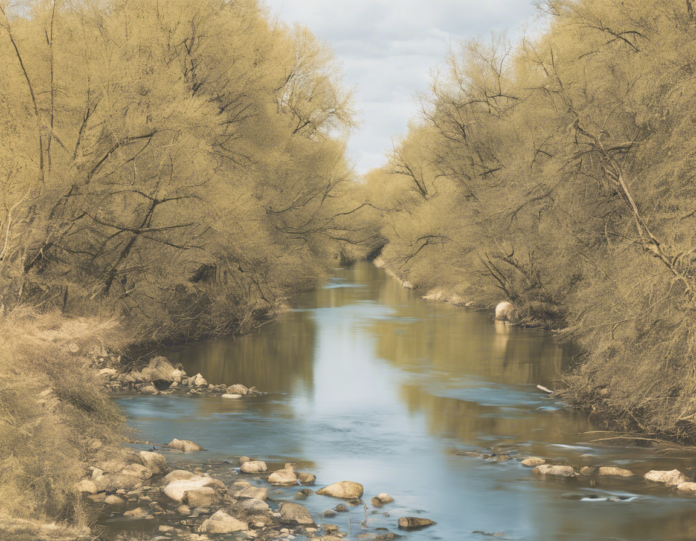Rivers are bodies of flowing water that play a crucial role in shaping landscapes, supporting ecosystems, and sustaining human life. The journey of a river is a fascinating story of constant movement and change, from its humble beginnings high in the mountains to its convergence with the vast oceans. In this article, we will delve into the intricate details of a river’s journey, exploring the processes that govern its flow, the landforms it creates, and the diverse life forms it supports.
The Source: Where It All Begins
At the heart of every river lies its source, the point at which water emerges from the ground or flows from a melting glacier. Sources can be springs, lakes, or even underground aquifers, but they all have one thing in common – they mark the beginning of a river’s journey.
Rivers in the Making: Small streams and creeks meander their way downhill, gathering volume and speed as they merge to form larger water bodies. These tributaries are the lifeblood of a river, supplying it with the necessary water to sustain its flow.
The Course: A Path of Resilience
As a river follows its natural course, it encounters various obstacles and challenges that shape its path and character. Meanders, rapids, and waterfalls are just some of the features that define a river’s journey, carving out unique landscapes along the way.
Erosion and Deposition: The relentless force of flowing water erodes rocks and sediments, transporting them downstream and depositing them in new locations. This process of erosion and deposition is responsible for the formation of river valleys, alluvial plains, and deltaic regions.
The Confluence: Coming Together
One of the most critical moments in a river’s journey is its confluence with another water body. Here, two rivers meet and merge their waters, creating a unified flow that carries the combined histories of both. Confluences are not only significant for rivers but also serve as vital ecological hotspots where diverse species thrive.
Biodiversity Hotspots: Confluences provide unique habitats for a wide range of flora and fauna, as the mixing of waters leads to different nutrient levels and oxygen concentrations that support a rich biodiversity.
The Delta: End of the Line
After a long and eventful journey, a river eventually reaches its delta, where it disperses its waters into the ocean. Deltas are dynamic landforms constantly shaped by the interplay of river currents and ocean tides, creating a mosaic of channels, mudflats, and marshes.
Influence of Human Activities: Human interventions such as dam construction, deforestation, and pollution have had a profound impact on rivers and their deltas, altering natural processes and threatening delicate ecosystems.
The Cycle Continues
Despite the myriad challenges they face, rivers persist in their eternal cycle of flowing and renewal. By adapting to changing conditions and evolving over time, rivers exemplify the resilience and adaptability of the natural world.
Importance of Conservation: Protecting rivers and their ecosystems is crucial for maintaining water quality, supporting biodiversity, and ensuring sustainable livelihoods for communities that depend on them.
FAQs (Frequently Asked Questions)
Q1: What is the longest river in the world?
A1: The Nile River in Africa is considered the longest river, spanning approximately 4,135 miles.
Q2: How do rivers contribute to the water cycle?
A2: Rivers play a vital role in the water cycle by transporting water from the land back to the oceans through evaporation and precipitation.
Q3: What is a watershed, and why is it important?
A3: A watershed is an area of land where all the water drains into a common water body, such as a river or lake. Watersheds are crucial for maintaining water quality and ecosystem health.
Q4: Can rivers change their course over time?
A4: Yes, rivers can change their course through natural processes like erosion, sedimentation, and floods, as well as human activities like dam construction and channelization.
Q5: How do rivers support human well-being?
A5: Rivers provide essential services such as freshwater supply, irrigation for agriculture, transportation, hydropower generation, and recreational opportunities for communities around the world.
In conclusion, the journey of a river is a captivating narrative of resilience, adaptation, and interconnection. As we marvel at the meandering paths and turbulent rapids of rivers, let us also reflect on our role as stewards of these lifelines that sustain us all. By understanding and appreciating the complex dynamics of river systems, we can work towards preserving their integrity for future generations to cherish and cherish.

